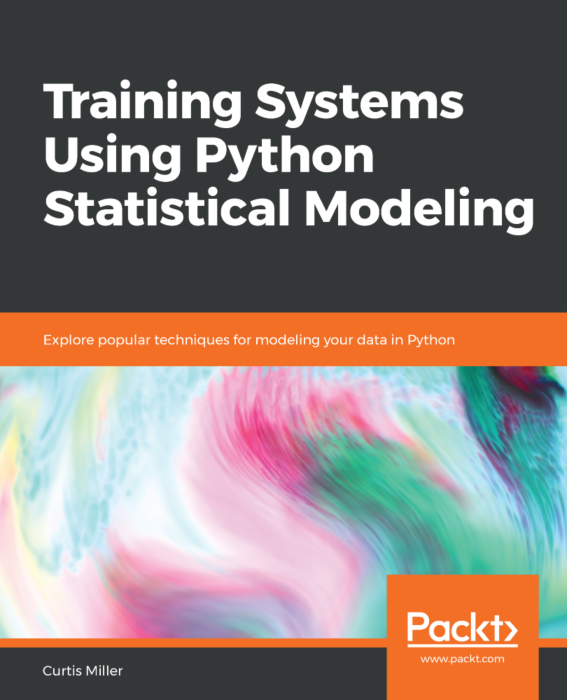Packt Publishing has turned another one of my video courses, Training Your Systems with Python Statistical Modeling, into a book! This book is now available for purchase.
writing
My Tutorial Book on Anaconda, NumPy and Pandas Is Out: Hands-On Data Analysis with NumPy and Pandas
I announced months ago that one of my video courses, Unpacking NumPy and Pandas, was going to be turned into a book. Today I’m pleased to announce that this book is available!
Materials for Teaching Applied Statistics
Today is the first day of the new academic year at the University of Utah. This semester I am teaching MATH 3070: Applied Statistics I, the fourth time I’ve taught this course.
Learn Foundations of Python Natural Language Processing and Computer Vision with my Video Course: Applications of Statistical Learning with Python
I’m pleased to announce my fourth and final video course. The course has already been out for a couple months by now, but that doesn’t mean it’s too late for me to write about it!
Unpacking NumPy and Pandas: The Book Is Coming Soon!
I have heard from my publisher, Packt Publishing, that my video course Unpacking NumPy and Pandas will become a book!
Learn Basic Python and scikit-learn Machine Learning Hands-On with My Course: Training Your Systems with Python Statistical Modelling
This post is actually months late, but like with my last video course announcement, it’s better late than never. And besides, of my video courses, I had the most fun writing this one.
Start Getting and Working with Data with “Data Acquisition and Manipulation with Python”
This news is a few weeks late, but better late than never!
Get Started Learning Python for Data Science with “Unpacking NumPy and Pandas”
I have exciting news!
Where to Go from Here? Tips for Building Up R Experience
At the University of Utah, I teach the R lab that accompanies MATH 3070, “Applied Statistics I.”” None of my students are presumed to have any programming experience, and they never hesitate to remind me of that fact, especially when they are starting out. When I create assignments and pick problems, I often can write a one- or three-line solution in thirty seconds that students will sometimes spend four hours trying to solve. They then see my solution and slap their foreheads at its simplicity. I can be tricky with my solutions. For example, suppose you wish to find the sample proportion for a certain property. A common approach (or at least the one used in the textbook our course uses, Using R for Introductory Statistics by John Verzani) looks like this:





